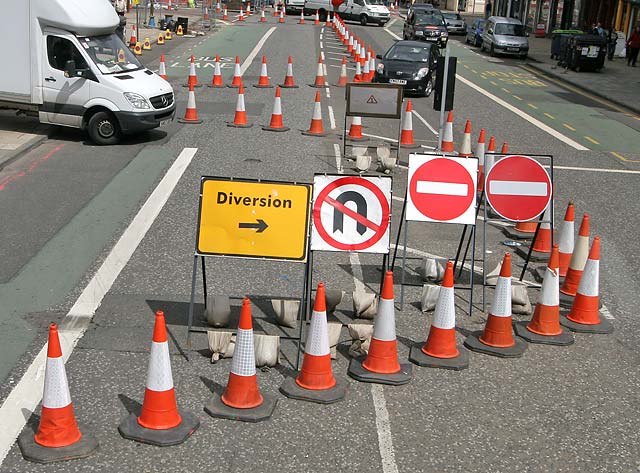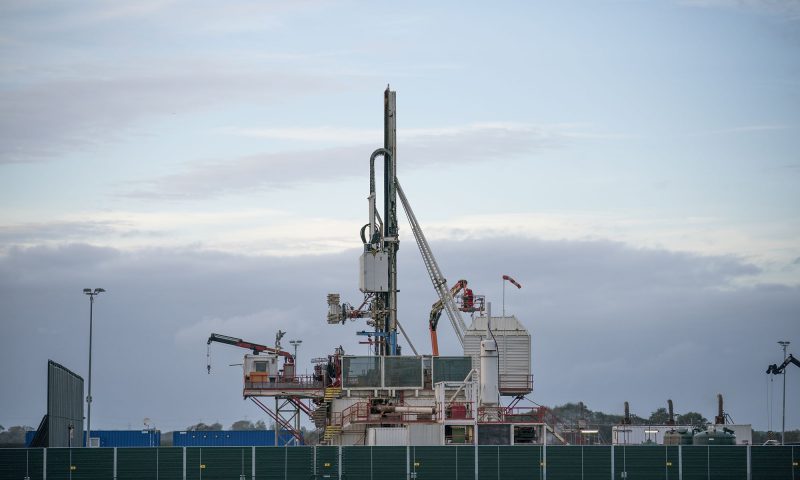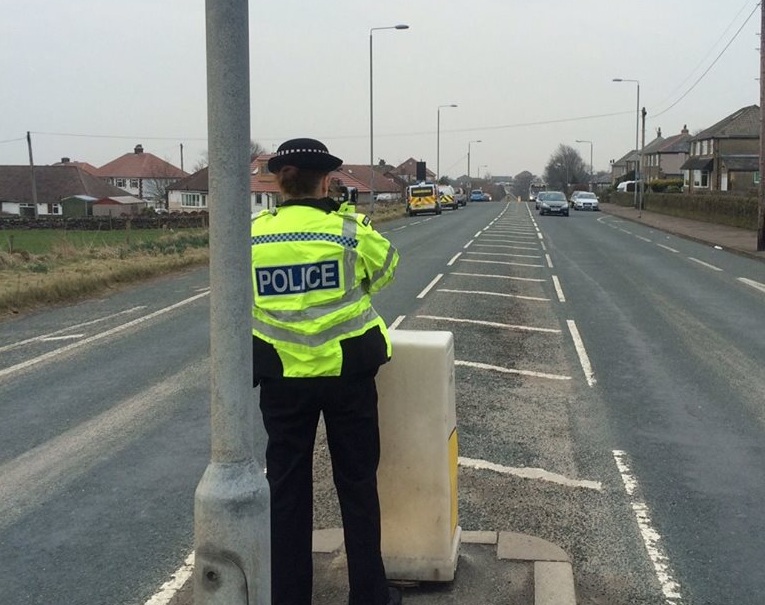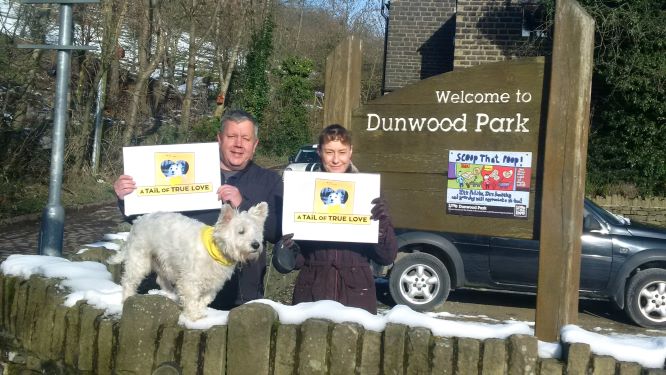
For real time information: https://oldham.roadworks.org/

TO THE: Greater Manchester Spatial Framework Consultation Team
The Oldham Council Liberal Democrat Group; the official opposition, comprising of eight elected members, representing the Crompton, Shaw and Saddleworth North Wards of the Oldham Metropolitan Borough Council, wish to make this collective submission in response to the consultation on the Greater Manchester Spatial Framework Revised Draft 2019.
Oldham is now expected to build an extra 14,290 homes by 2037. Sites allocated for development in Crompton, Shaw and Royton (four electoral wards) are expected under current plans to accommodate 3,768 new homes and 201,270 square metres of industrial development.
These figures have arisen because the Conservative Government is insistent that the ten local authorities in Greater Manchester continue to utilise the population data issued by the Department of Communities and Local Government in 2012 to determine the local ‘objectively assessed need’ for new housing. These figures estimated far higher rates of population growth than was indicated by data published later in 2016 by the Office for National Statistics.
For clarity, the 2012 figures published by the Department of Communities and Local Government indicated that households in Greater Manchester would grow by 213,380 by 2035 or 18.75%, however, the more recent figures published by the Office for National Statistics in 2016 predict an increase of only 164,006 or 14.55%.
This is a massive difference of almost 50,000 homes.
For Oldham the difference would amount to 2,587 less properties to build. This is a significant proportion of the 3,768 new homes that the plan projects will be built on greenfield sites at Crompton, Shaw and Royton. The adoption of the lower figures would mean that most of the irreplaceable Green Belt and OPOL sites allocated for housing development in these areas would be saved.
As such, the Liberal Democrat Group on Oldham Council has written to the Secretary of State for Communities and Housing, The Rt. Hon James Brokenshire MP, asking if it would be permissible to instead use the lower 2016 figures for the ‘housing needs assessment’.
We urge the Mayor of Greater Manchester and the leaders of the ten local authorities of the Greater Manchester Combined Authority to do the same.
In the Government’s housing white paper, Fixing our Broken Housing Market, published in February 2017 it states that, whilst expecting local authorities to establish their ‘objectively assessed need’ for new housing, that the government is committed to ‘maintain existing strong protections for the Green Belt, and clarifying that Green Belt boundaries should be amended only in exceptional circumstances’ and that ‘the presumption should be that brownfield land is suitable for housing unless there are clear and specific reasons to the contrary’ with ‘great weight…attached to the value of using suitable brownfield land within settlements for homes.’
The Mayor of Greater Manchester Andy Burnham also states in his Foreword to the 2019 Revised Draft that he is committed to ‘a brownfield-first approach to the release of sites for development.’
The Government’s and the Mayor’s positions are both highly commendable. Like them, the Liberal Democrat Group on Oldham Council believe strongly that any proposed new housing development should take place on brownfield sites first and that no Green Belt or OPOL sites should be encroached upon whilst such brownfield land still exists.
We therefore welcome the publication by Oldham Council of its Brownfield Register and urge the Council to encourage elected members and the public to submit suggestions for consideration of additional brownfield sites and unoccupied empty buildings with the potential for conversion. In this way, the Oldham Liberal Democrat Group are convinced that the demand for new housing could be met solely through the allocation of brownfield sites. The early development of existing sites with planning permission for housing development, town centre residential developments built to a higher density, bringing empty homes back into use, and converting empty buildings, such as offices and mills, into homes would eliminate the need to allocate any Green Belt or OPOL sites for housing development.
One issue inhibiting the development of brownfield sites and the conversion of former industrial premises for housing is the cost of remediation. In Oldham, many such sites suffer from significant below-ground contamination or buildings with contaminated infrastructure, the result of previous industrial use as a cotton mill; chemical and coal gas plant; coal mine; or dye works.
Decontaminating such sites is very expensive and this cost is a significant disincentive to local authorities and to housing developers as it can make housing developments unaffordable.
According to Department of Trade figures, the UK has approximately 1,000,000 acres of contaminated land, much of it in Northern towns, like Oldham, a legacy of their prominence as world leaders in the Industrial Revolution. As the estimated average cost of cleaning up contaminated land is £250,000 per acre, expenditure of £250 billion would be required.
Comparably, the amount of Government funding available to address remediation is wholly inadequate. There is a £2.3 billion Housing Infrastructure Fund and only a small part of this money will be made available for remediation. The Government allocated a miniscule £45 million for land remediation under the new Land Release Fund.
If the Housing Infrastructure and Land Release Funds were made available at these same rates and every penny was set aside every year solely for remediation, it would take over 100 years to make all brownfield sites across the country free of contamination.
As such, the Oldham Liberal Democrat Group feels that it is imperative that the Mayor of Greater Manchester and the ten local authority leaders join with local MPs, housing developers and social landlords to lobby the Government to significantly increase the derisory sums currently made available to address remediation. Without more money we feel that the government’s stated aspiration to ensure that brownfield sites make the ‘maximum contribution’ will prove to be a baseless and hollow claim.
Turning now to the specific sites earmarked for housing development under the GMSF Revised Draft in the areas of Crompton, Shaw and Royton. The Oldham Liberal Democrat Group welcomes the overall reduction in the number of homes that the revised plan proposes to be built on the sites at Kingsway South (Policy GM Allocation 3), Beal Valley (14), Cowlishaw (16), and Hanging Chadder (17), but opposes the identification of a new greenfield site at Thornham Old Road (21) (600 homes) and the near fifty percent increase in housing numbers proposed for Broadbent Moss (Policy GM Allocation 15) (1,450 from 1,000).
Although there is a small overall reduction in housing numbers from 4,040 (2016 proposal) to 3,768 (2019 proposal), in our view this still represents a massive and inequitable land grab in Crompton, Shaw and Royton and the devastation of our local Green Belt and OPOL (other protected open land).
For clarity, it is the view of the Oldham Liberal Democrat Group that housing development on Green Belt or OPOL sites is completely unacceptable whilst brownfield sites, sites with existing planning permission for new homes, empty homes, and derelict and unloved town centres or industrial buildings that could be utilised for housing remain.
In our view, alternative brownfield sitesshould be considered beforethe development of Green Belt or OPOL sites and a fairer apportionment of housing development across the Metropolitan Borough should also be considered rather than the disproportionate development currently proposed in Crompton, Shaw and Royton. This may seem simplistic as other wards may have few sites, but there is the possibility to use industrial sites, such as those in Derker which still await development.
The draft GMSF readily identifies the need for a very significant investment in transport infrastructure. Improved transport is a critical obstacle to be overcome to ensure the success of the expansion desired in the GMSF. Many of the strategic allocations are sited near our motorway corridors, ostensibly to take advantage of existing networks.
However, our existing motorways are frequently constrained by high levels of congestion resulting in unacceptable journey times and additional traffic jams on feeder and local roads. The projected growth of industrial warehousing, office space and new homes will require monumental investment in transport infrastructure. It is of paramount importance to ensure that the transport infrastructure is in place before other building takes place.
All the sites identified for development, especially those in Shaw and Crompton are devoid of good vehicular access and there is no obvious way to make the necessary improvements.
Cowlishaw has no acceptable roads leading into the proposed site. The topography around the Whitfield farm area makes it difficult to envisage an elegant solution to site access. Similarly, the Beal Valley site is currently served by a narrow road and the desire to facilitate access to this site by enhancing links to Shaw and Crompton Metrolink Station seem incredulous; the only current access, via Beal Lane, is saturated with existing traffic and HGV movements to and from existing businesses which are large distribution centres. The car park at Shaw and Crompton Metrolink is already at capacity and more space is urgently needed here and elsewhere on the line.
We welcome the proposal to construct a new Metrolink stop at Cop Road and would urge consideration for developing other stops elsewhere on the Rochdale – Oldham Metrolink line (for example, at Dunwood Park) to improve accessibility.
The increase in population will necessitate provision of additional services. The GMSF does not appear to adequately address available funding to deliver on these requirements.
In Shaw and Crompton, the necessary infrastructure to support our existing population is lacking. We have primary schools that are overcrowded and full; a secondary school that is falling apart; a dilapidated Health Centre that is near cardiac arrest; no swimming facilities or dry leisure provision; precious few youth facilities and no municipal tip.
Under the proposals, 1,458 new homes will be built for growing families on three sites that fall within Shaw and Crompton at Kingsway South, Beal Valley and Cowlishaw.
These new residents will need more primary and secondary school places; more GPs and dentists; leisure and shopping facilities; and new highways and more buses and trams to get them there.
Oldham Council’s decision to close and not replace the Crompton Pool and Gym now looks a little short-sighted given the number of new young residents that will need to learn to swim and the number of adults that will want to keep fit.
An important vision of the GMSF is that Greater Manchester becomes as well known for the quality of its environment as for its economic success. Green Belt plays a role in this but there are important green spaces, parks, rivers and canals in the heart of our urban communities which are equally valuable. The protection and enhancement of our blue and green infrastructure is a central theme of the strategy.
In view of the above aspiration it is difficult to understand why the specific green sites in Shaw and Crompton have been proposed. There has been a lack of balance in the review and failure to give necessary weight to environmental and quality of life issues.
The vast majority of sites are notably attractive open spaces that provide pleasure, relaxation, and health benefits to local residents as well as our wider community. The sites include public footpaths enjoyed by many dog-walkers, ramblers and walking groups. Many of the Public Rights of Way are important to the historic Shaw and Crompton Beating of the Bounds walk and Crompton Circuit walks. These locations also provide one of the few opportunities for people to undertake horse riding in safety which is particularly of concern for young and inexperienced riders.
These sites are further enhanced by a diverse range of flora and fauna and importantly provide those ‘green lung’ areas which minimise urban sprawl between built up conurbations.
Two of the sites include small but nevertheless important rivers within their boundaries; the Rivers Irk and Beal (Cowlishaw and Beal Valley respectively) help to prevent flooding and are attractive features of the two sites.
Additionally, the Cowlishaw site is renowned for its numerous local springs and is given to serious flooding. The area has deep unstable subsoil that will require significant pilings leading to excessive construction costs.
Cowlishaw and Beal Valley also contain Sites of Biological Importance and these must be retained.
With regards to Saddleworth, there is only one Strategic Site in the Spatial Plan which is Robert Fletcher’s in the Greenfield valley, which has long been seen as needing a strategic view and plan to avoid piecemeal development; indeed, the Parish Council presented an outline plan for the valley some years ago and did so in response to the initial GMSF proposals.
The revised plan now provides for more permanent houses (170, as opposed to 120) and less holiday lodges (10 to 15, as opposed to 100). More houses are welcome, and it is good that there is now a recognition that the development must include ‘affordable homes’ as affordable housing in the Saddleworth villages is very hard to come by, forcing some residents to move away from their roots and their loved ones.
The topography and lack of transport links and the high value of local scenery makes other large sites hard to find in Saddleworth especially given the presence of the Peak National Park there.
Saddleworth is, however, very vulnerable to the number of other smaller sites, some of them astoundingly unsuitable, offered for development in addition to those in this strategic framework.
The Green Belt and open spaces within Oldham are areas of pleasant natural beauty that make us unique in Greater Manchester.
In summary, the Oldham Council Liberal Democrat Group firmly believes that our precious Green Spaces should be protected.
The Group strongly advocates that no building on Green Belt or OPOL be undertaken until developments are first undertaken on Brownfield sites, on sites where planning permission for housing development has already been granted, and upon the many derelict and the unloved sites in our town centres and districts; and also after the conversion of every mill and factory into housing use and after every empty home has been brought back into use.
Only when all of these things have been done should we then, and only then, consider developing any part of our precious Green Belt.
Yours sincerely,
Howard Sykes

Liberal Democrat Councillor Derek Heffernan will be proposing a motion to the next meeting of Oldham Council (Wednesday 20 March) asking the Greater Manchester Pension Fund to review its investments in fracking operations and in fossil fuels in light of the recent decision by the Mayor of Greater Manchester and the leaders of the ten local authorities making up the Greater Manchester Combined Authority to ‘presume’ against fracking when considering planning applications.
Councillor Heffernan, who has previously served as the representative of Oldham Council on the board of the Pension Fund, described it as a ‘dilemma’: “How can we retain investments in fracking and in fossil fuels when the presumption is because of their environmental impact that these are a bad thing and to be avoided? We need our pension fund managers to take a long hard look at the situation and to consider if they are doing the right thing in retaining these investments.”
The Motion reads:
Council notes that:
Council therefore resolves to request the Chief Executive write to the Chief Executive of the Greater Manchester Pension Scheme and the Mayor of Greater Manchester asking them to review this position, and to take action to resolve this dilemma.
Proposed by: Seconded by:
Councillor Derek Heffernan Councillor Howard Sykes MBE


Saddleworth North Liberal Democrat Councillor Garth Harkness is proposing a motion to the next full meeting of Oldham Council (Wednesday 20 March) asking for further measures to be adopted to tackle speeding across the borough, including in his own ward.
Councillor Harkness first asked for action in a letter sent last September to the Deputy Leader of the Council, Councillor Arooj Shah. Unfortunately six months on, nothing seems to have changed.
Councillor Harkness said: “Speeding is one of those issues that every ward councillor receives complaints about on a regular basis, yet action on this issue by this Labour Administration seems so slow. In contrast, the Liberal Democrats seek action on road safety issues.”
“We have previously proposed 30mph zones on residential streets but, after a long look by the Overview and Scrutiny Board, nothing happened, and more recently we proposed Lorry Watch schemes to tackle irresponsible truck drivers using the wrong Sat Navs and blocking our villages.”
“I now hope that Council will adopt this motion and look to introduce more community led anti-speeding schemes backed by roadside cameras to catch offenders.”
The motion reads:
Council notes that speeding continues to be a factor in road collisions and that a pedestrian is four times more likely to die if they are hit by a vehicle travelling at forty miles per hours than they are at 30mph.
It is therefore imperative that Council working with the Police and residents seek to reduce excessive vehicular speeds in this borough, especially outside schools, on minor residential roads and in rural areas.
Council believes that we should work with our residents’ groups to deter and catch offenders and that we should employ mobile technology in order to do so.
Council therefore resolves to ask the Overview and Scrutiny Board to:
Proposed by: Seconded by:
Councillor Garth Harkness Councillor Hazel Gloster

The Liberal Democrat Group on Oldham Council is proposing a motion to the next Council (Wednesday 20 March) calling for more action on dog fouling and microchipping by adopting good practice from other local authorities, by making use of new technologies, and by working with the Dogs Trust charity.
The motion is being proposed by Shaw Liberal Democrat Councillor Chris Gloster, who recently showed his support for the Dogs Trust campaign ‘A Tail of True Love’ which calls on all dog owners to take responsibility and show ‘true love’ to their pets by cleaning up after them.
Councillor Gloster said: “Dog fouling remains one of my constituents’ biggest bugbears. As a ward councillor, I receive many complaints as do my Liberal Democrat colleagues in Shaw and Crompton. Not only is dog mess a disgusting eyesore, but it also represents a health hazard. Children can be blinded by contact with it. Fortunately, most dog owners are responsible and do clean up after their pets, but a small minority unfortunately do not.”
Councillor Gloster’s motion is seconded by Liberal Democrat Crompton Councillor Dave Murphy, who proposed a similar motion to Council in 2014. He said: “Following our last motion, the Council introduced a boroughwide Public Space Protection Order, which covers dog fouling, but unfortunately chose not to adopt any new technology to help detect and apprehend offenders. We hope now that the technology is proven that it will now be possible to take a fresh look at tackling this problem.”
The motion calls for awareness raising and education to be undertaken to change the behaviour of errant owners and to encourage them to micro-chip their pets so they can quickly be reunited if their pets become lost. However ultimately the Liberal Democrats also recognise that there is the need for a robust enforcement regime.
Councillor Gloster added: “Unfortunately there is sometimes the need for a stick when the carrot is insufficient. We would like to see technology introduced so members of the public can report offenders using their smart phones in real time and we want to see the Council imposing the highest on-the-spot fine of £100 on offenders that is permissible under a Public Space Protection Order.”
The motion appears below:
This Council notes that:
In October 2014, following the adoption of a motion by Council, the Overview and Scrutiny Board looked at additional measures to combat dog fouling and nuisance; however, none were adopted.
Council recognises that, with the passage of time, new innovative practices and the greater use of technology have in other local authorities had a proven impact in addressing these issues.
This Council wishing to more effectively prevent dog fouling and nuisance in this borough resolves to:
And then bring a report back on this matter to Council at the earliest opportunity.
Proposed by: Seconded by:
Councillor Chris Gloster Councillor Dave Murphy
Just a note to confirm that work has started this morning on the initial phase of making St Paul’s safe. As a consequence the site perimeter fence has been extended to allow vehicle access. This arrangement will be maintained until further notice, it does not restrict pedestrian access.
For more information please visit:
https://www.shawroytonmethodist.org.uk/st-pauls-shaw.html
Email: RSCDistrictTeam@oldham.gov.uk
Highways Contact Centre 0161 770 4325
Councillor Chris Gloster E: chris.gloster@oldham.gov.uk T: 01706 847709
TRAFFIC DIVERSION ROUTE FOR ROCHDALE ROAD CLOSURE
Due to the inconvenience the temporary waiting restrictions are creating for residents who live on the diversion route, a meeting has taken place with the Transport Managers at the Distribution Centres to see if alternative routes can be used through the centre of Shaw, in an evening period, when traffic flows have reduced.
The distribution centres have advised that an instruction has been given to their drivers to use a combination of Eastway, High Street and Westway from 8pm in the evening until 8am, In view of this the legal order for the waiting restrictions along Beal Lane, Grains Road, Hillside Avenue and Buckstones Road is being amended to reflect the changes so residents can park near to their homes from 8pm – 8am.
Arrangements are being made to have the signs changed, which will hopefully be completed by Monday (11th March). When the new signs appear , if you need the use of the highway to park you can do so between the hours of 8pm – 8 am.
Due to the use of Westway and Eastway in the evening period it will be necessary to prevent parking from 8pm – 8am along Westway ( High Street to Farrow Street East) and prohibit waiting at any time along the full length of Eastway.
For more information please visit:
https://www.shawroytonmethodist.org.uk/st-pauls-shaw.html
Email: RSCDistrictTeam@oldham.gov.uk
Highways Contact Centre 0161 770 4325
Councillor Chris Gloster E: chris.gloster@oldham.gov.uk T: 01706 847709
THE METHODIST CHURCH HAVE SET UP THEIR OWN WEB PAGE TO KEEP PEOPLE UPDATED
It can be found at: https://www.shawroytonmethodist.org.uk/st-pauls-shaw.html
This will be the primary point of contact for those who wish to have news of progress regarding the building and other matters.
The phone number should the lights at the junction of Buckstones Road/Milnrow fail to work correctly is: Amberon on 0845 371 5050.
COPY OF LETTER SENT TO DISTRIBUTION CENTRES LAST WEEK
Just a quick note to thank you all for your support in making alternative arrangements for the diversion routes which we have had to put in place following the partial collapse of the chapel in Shaw.
As the vehicles are redirected through residential areas, with schools also along the routes, could you please reinforce the need to all your drivers to reduce their speeds. We have had a number of reports from concerned residents which whilst they understand the need for the diversions are concerned at the speeds at which the vehicles are passing through which in turn necessitates the use of brakes.
Your help on this issue is again appreciated.
For more information please visit:
https://www.shawroytonmethodist.org.uk/st-pauls-shaw.html
Email: RSCDistrictTeam@oldham.gov.uk
Highways Contact Centre 0161 770 4325
Councillor Chris Gloster E: chris.gloster@oldham.gov.uk T: 01706 847709